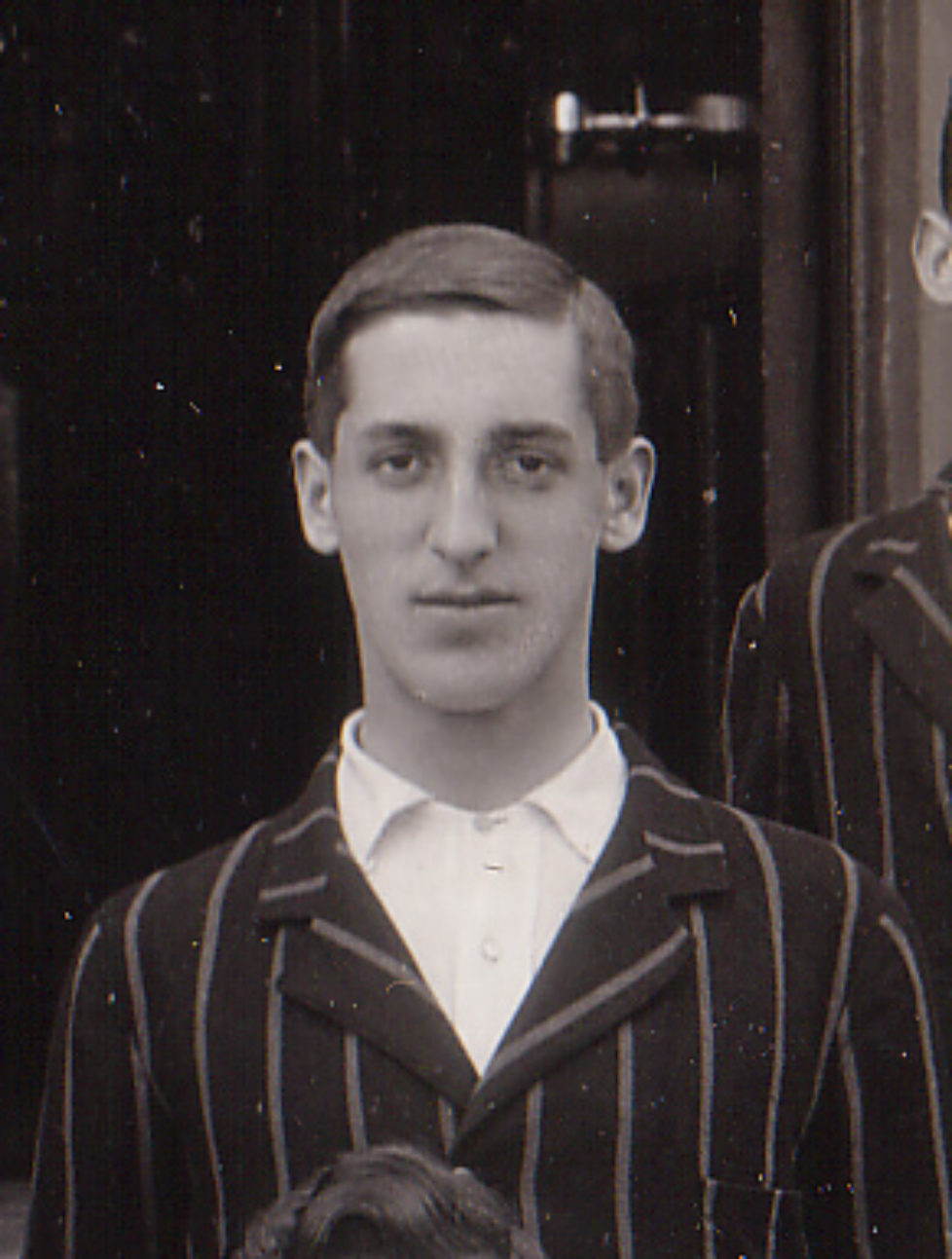Sjt
Thomas Hindson Mellish
Informationen zu Geburt
|
Geburtsdatum: 05/09/1894 |
|
Geburtsort: Carlisle, Cumberland, England, Vereinigtes Königreich |
Allgemeine Informationen
|
Beruf: Lehrer |
Informationen zum Armeedienst
|
Land: England, Vereinigtes Königreich |
|
Truppe: British Expeditionary Force |
|
Rang: Serjeant |
|
Dienstnummer: 270876 |
|
Einberufung datum: 04/03/1915 |
|
Einberufung ort: Glasgow, Lanarkshire, Vereinigtes Königreich, Schottland |
|
Einheiten: — Royal Scots (Lothian Regiment), 16th Bn. (Letzte bekannte Einheit) |
Informationen zu Tod
|
Sterbedatum: 22/10/1917 |
|
Sterbeort: Six Roads, Belgien |
|
Todesursache: Im Kampf gefallen |
|
Alter: 23 |
Gedenkstätte
|
Tyne Cot Memorial Tafel: 11 |
Auszeichnungen und Orden 2
|
British War Medal Medaille — 06/10/1920 |
|
Victory Medal Medaille — 06/10/1920 |
Punkte von Interesse 2
| #1 | Geburtsort | ||
| #2 | Einberufung ort |
Meine Geschichte
Thomas Hindson Mellish was a twenty-three-year-old teacher from Carlisle, Cumberland, who fell during the Battle of Passchendaele. The young man enlisted in Glasgow in 1915. By October 1917 he served as a Serjeant in the 16th Battalion Royal Scots (Lothian Regiment), part of the 101st Brigade, of the 34th Division.
Between 13 and 23 October 1917 the 34th Division was engaged in the fighting for the Broenbeek stream. These engagements were part of the Battle of Passchendaele. On 20 October 1917 the 16th Royal Scots moved into the front line in anticipation of an attack. The Battalion held a line of organised shell hole positions running from Aden House to Turenne Crossing and to Colibri Farm. The conditions in the line were appalling. The weather was bad and many shell holes were filled with water. Throughout the following days the 16th Royal Scots were frequently shelled by the German artillery.
On 22 October at 5.35 a.m. the 34th Division attacked with two Brigades. The attack of the 101st Brigade was carried by the 15th and 16th Royal Scots. But the attack didn’t go as planned. The right Companies of the 16th Royal Scots were quickly pinned down at the Huts east of Turenne Crossing. The Companies on the left reached Six Roads, where they in turn came under heavy machine-gun fire. Unable to advance any further and with their right flank up in the air, the men at Six Roads were forced to retreat to Egypt House.
The whole attack had been in vain. The German defences had withstood the blow and little headway was made. Casualties in the Battalion were high. Serjeant Thomas Hindson Mellish, barely twenty-three-years old, went missing during the attack on Six Roads and was later reported killed in action. His remains were not recovered or were never identified. As he has no known grave Thomas is remembered on panel 11 of the Tyne Cot Memorial.
Between 13 and 23 October 1917 the 34th Division was engaged in the fighting for the Broenbeek stream. These engagements were part of the Battle of Passchendaele. On 20 October 1917 the 16th Royal Scots moved into the front line in anticipation of an attack. The Battalion held a line of organised shell hole positions running from Aden House to Turenne Crossing and to Colibri Farm. The conditions in the line were appalling. The weather was bad and many shell holes were filled with water. Throughout the following days the 16th Royal Scots were frequently shelled by the German artillery.
On 22 October at 5.35 a.m. the 34th Division attacked with two Brigades. The attack of the 101st Brigade was carried by the 15th and 16th Royal Scots. But the attack didn’t go as planned. The right Companies of the 16th Royal Scots were quickly pinned down at the Huts east of Turenne Crossing. The Companies on the left reached Six Roads, where they in turn came under heavy machine-gun fire. Unable to advance any further and with their right flank up in the air, the men at Six Roads were forced to retreat to Egypt House.
The whole attack had been in vain. The German defences had withstood the blow and little headway was made. Casualties in the Battalion were high. Serjeant Thomas Hindson Mellish, barely twenty-three-years old, went missing during the attack on Six Roads and was later reported killed in action. His remains were not recovered or were never identified. As he has no known grave Thomas is remembered on panel 11 of the Tyne Cot Memorial.
Quellen 3
|
16 Battalion The Royal Scots. (The National Archives, KEW (TNA), WO 95/2458/1). https://discovery.nationalarchives.gov.uk/details/r/C14303 Weitere Quellen |
|
McCarthy C., Passchendaele. The Day-by-Day Account, (London, Uniform, 2018), pg. 139-140. Verwendete Quellen |
|
Trinity School War Memorial https://www.trinity.cumbria.sch.uk/warmemorials/thomas-hindson-mellish/ Verwendete Quellen |
Weitere Informationen 3
|
Commonwealth War Graves Commission Database https://www.cwgc.org/find-records/find-war-dead/casualty-details/1635041 |
|
Namenlijst (In Flanders Fields Museum) https://namenlijst.org/publicsearch/#/person/_id=8aa33fea-5ba1-448a-a4f3-4c08d768b91b |
|
Lives of the First World War (Imperial War Museum) https://livesofthefirstworldwar.iwm.org.uk/lifestory/3005116 |
